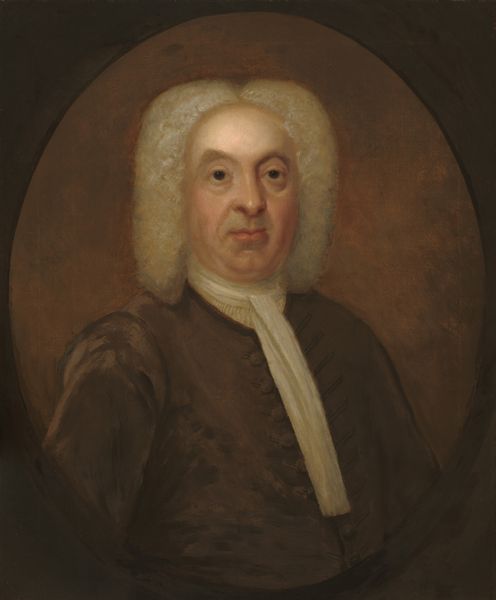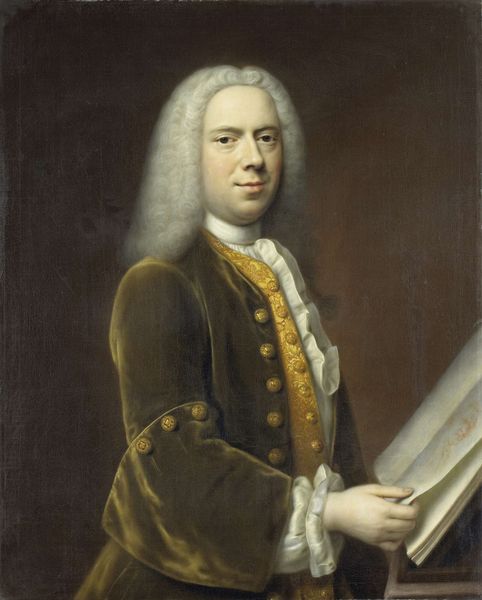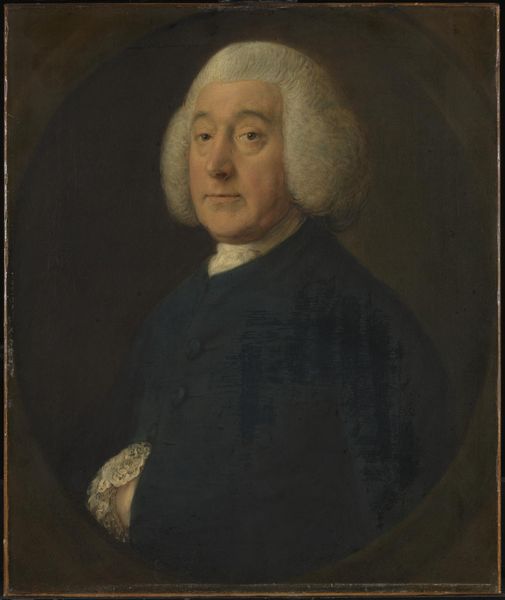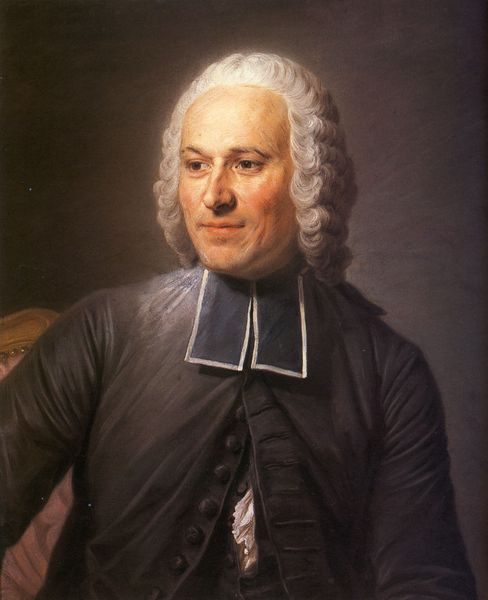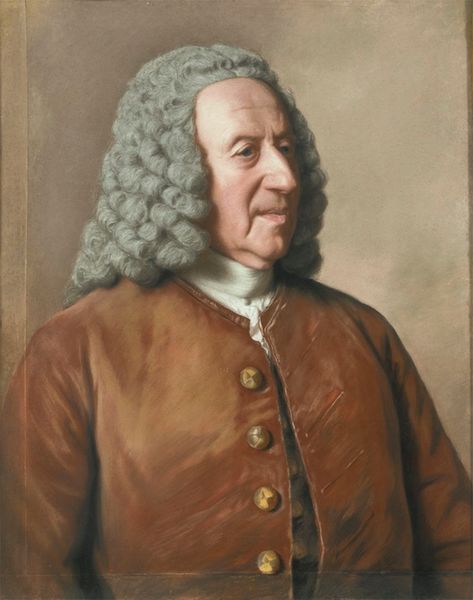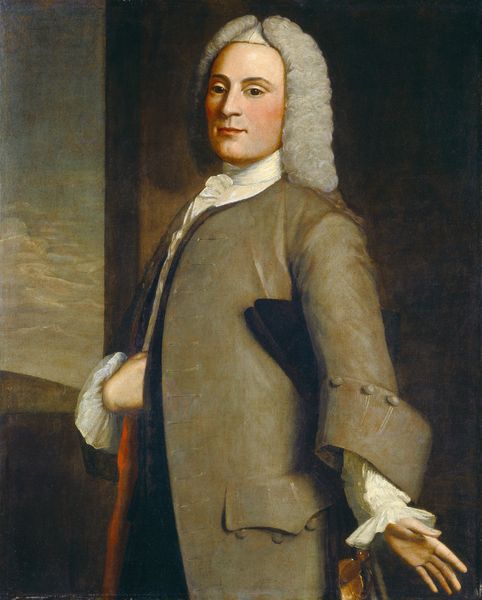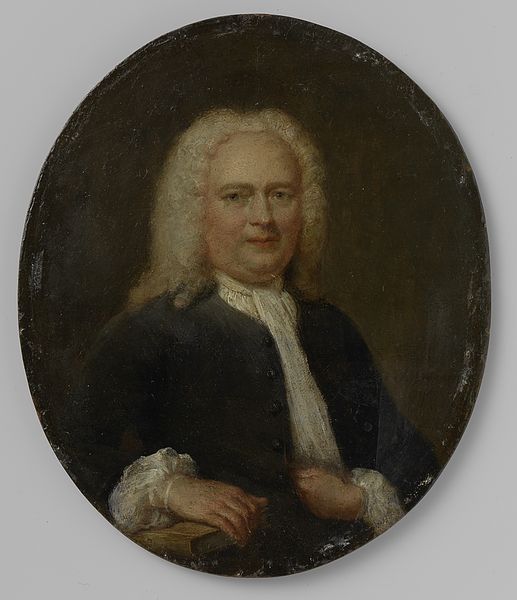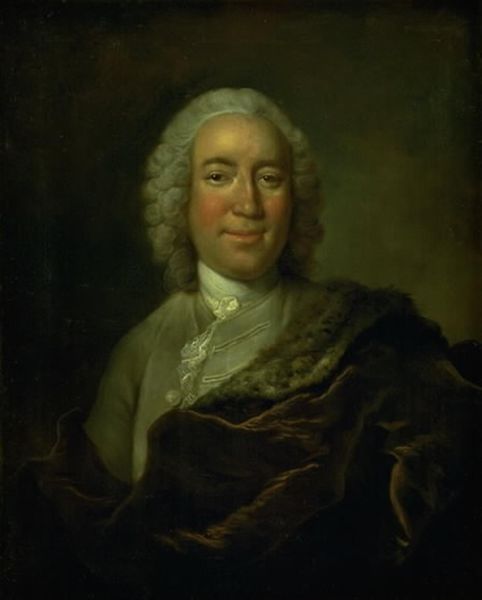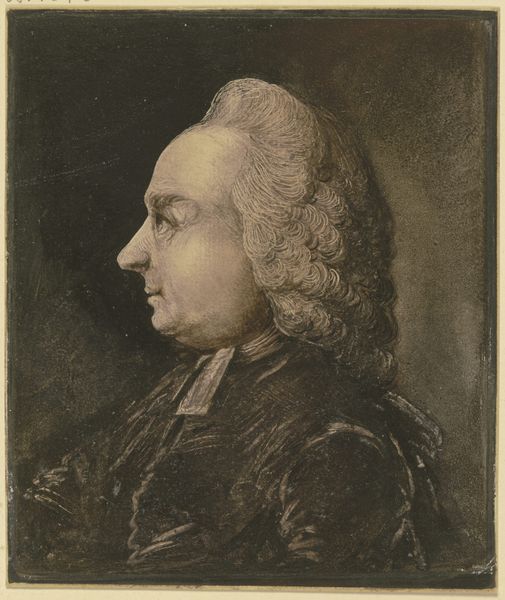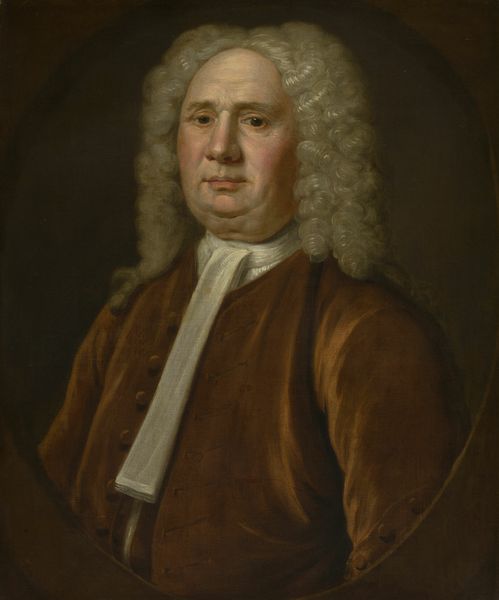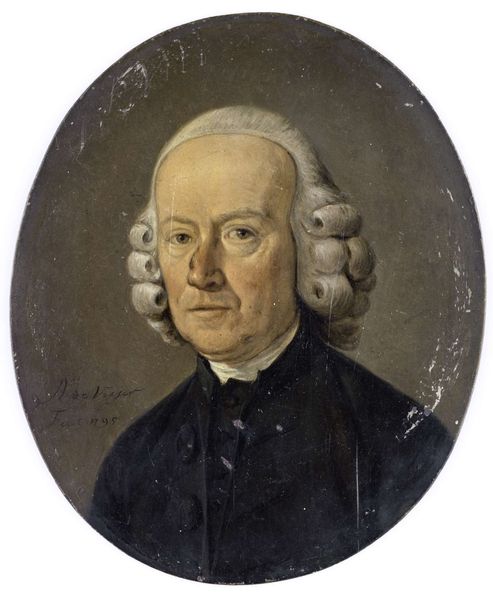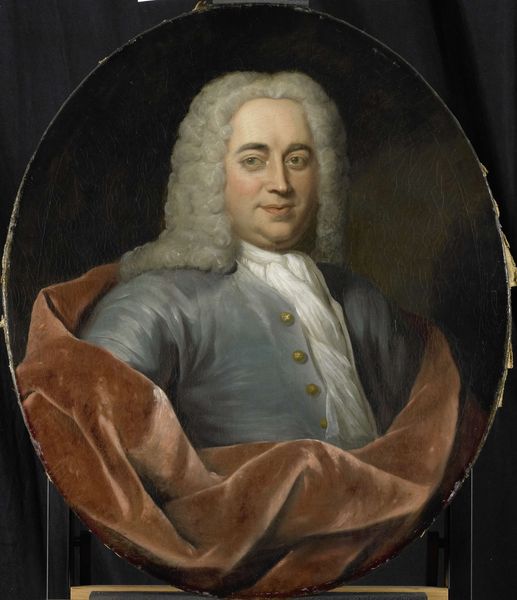
painting, oil-paint
#
portrait
#
figurative
#
baroque
#
painting
#
oil-paint
#
portrait reference
#
genre-painting
#
academic-art
#
realism
Copyright: Public Domain: Artvee
Curator: Looking at this striking portrait from around 1758, made with oil paints by John Singleton Copley, I’m struck by the rather serious demeanor of its subject. Editor: Yes, there's a somberness to this piece that feels very characteristic of the pre-revolutionary era in America. I wonder what he was thinking. Curator: The gentleman depicted is Andrew Oliver. He was a prominent figure in Massachusetts politics and later became the Stamp Master, which, as you can imagine, made him quite unpopular with the colonists. It's intriguing how Copley has captured what I see as a deep melancholy—maybe even a sense of foreboding. Do you see hints of it? Editor: Absolutely. Knowing his political position at that moment in history, the wig almost reads as a kind of oppressive mask of power. Look at how it frames his face, so controlled and deliberate. Considering the colonists’ rebellion brewing, it gives me a visceral sense of tension between his duty and perhaps a private sense of conflict. Curator: Note also how Copley utilizes light. The face is illuminated, highlighting his brow and subtle creases near the mouth, while the background and attire fade into deeper hues. There's something of a power dynamic at play here as light traditionally is associated with insight. Editor: A definite contrast exists between light and shadow. I agree, that technique does draw focus on his facial expression and perhaps what lurks beneath it. Beyond just being a competent portraitist, I'd say Copley provides an acute character study. I imagine the man feels the heavy weight of maintaining imperial power. Curator: There is such enduring meaning layered into seemingly straightforward art! By understanding how these artists used symbols—even something like light or dress—we can get in touch with what connects us through generations. Editor: Agreed. And how examining even historical artworks like this lets us challenge power structures, or see the beginnings of change. It's why bringing contemporary theory into art is more vital than ever, making this more than a formal image, it humanizes a character during political unrest.
Comments
No comments
Be the first to comment and join the conversation on the ultimate creative platform.
